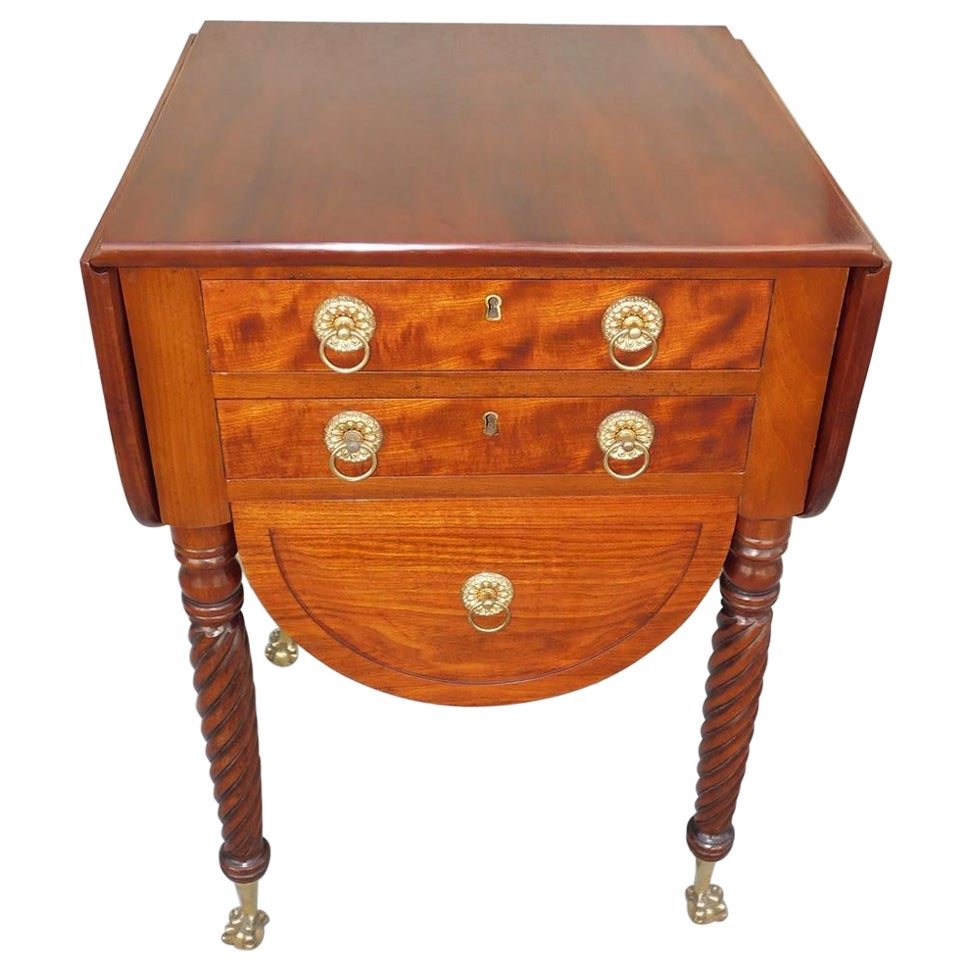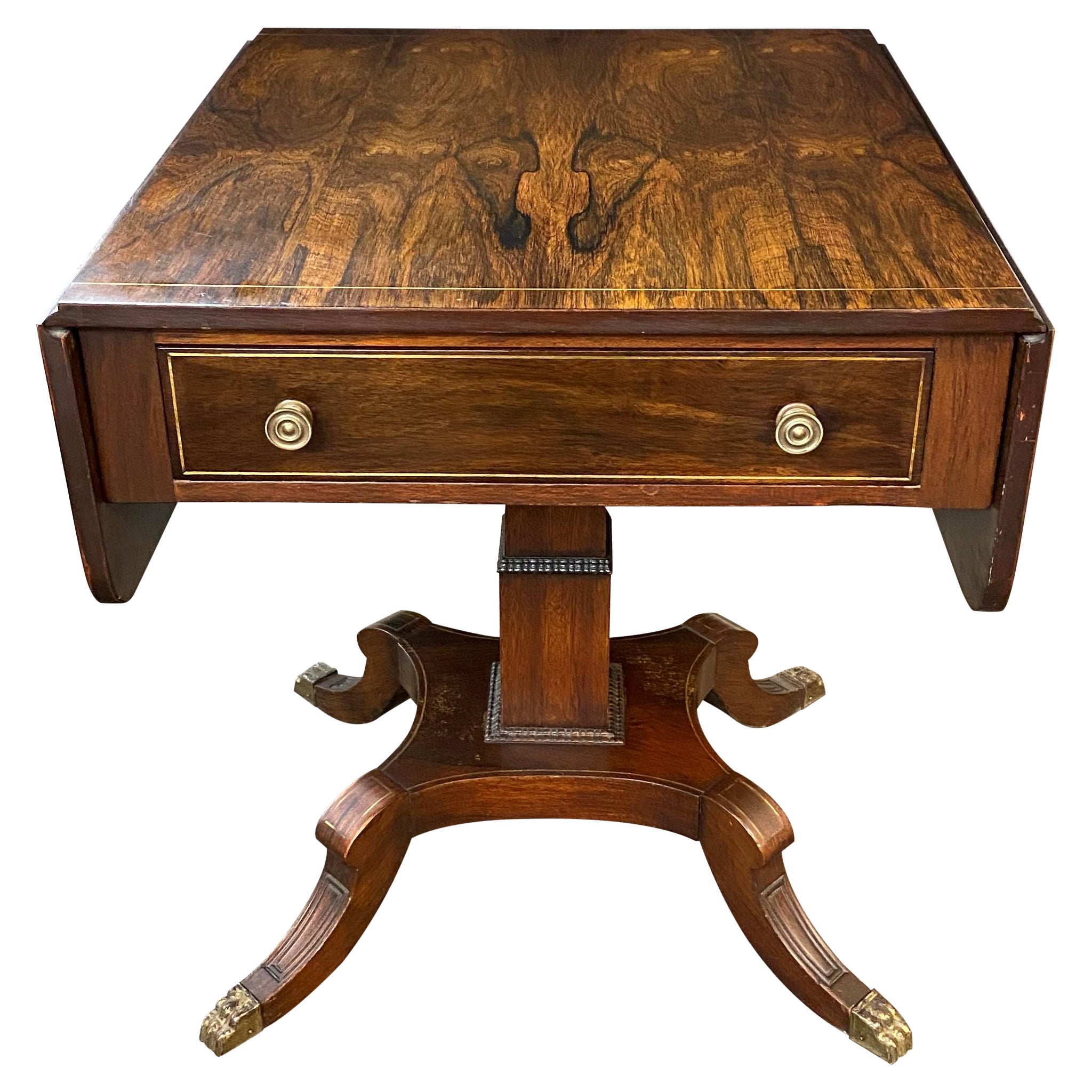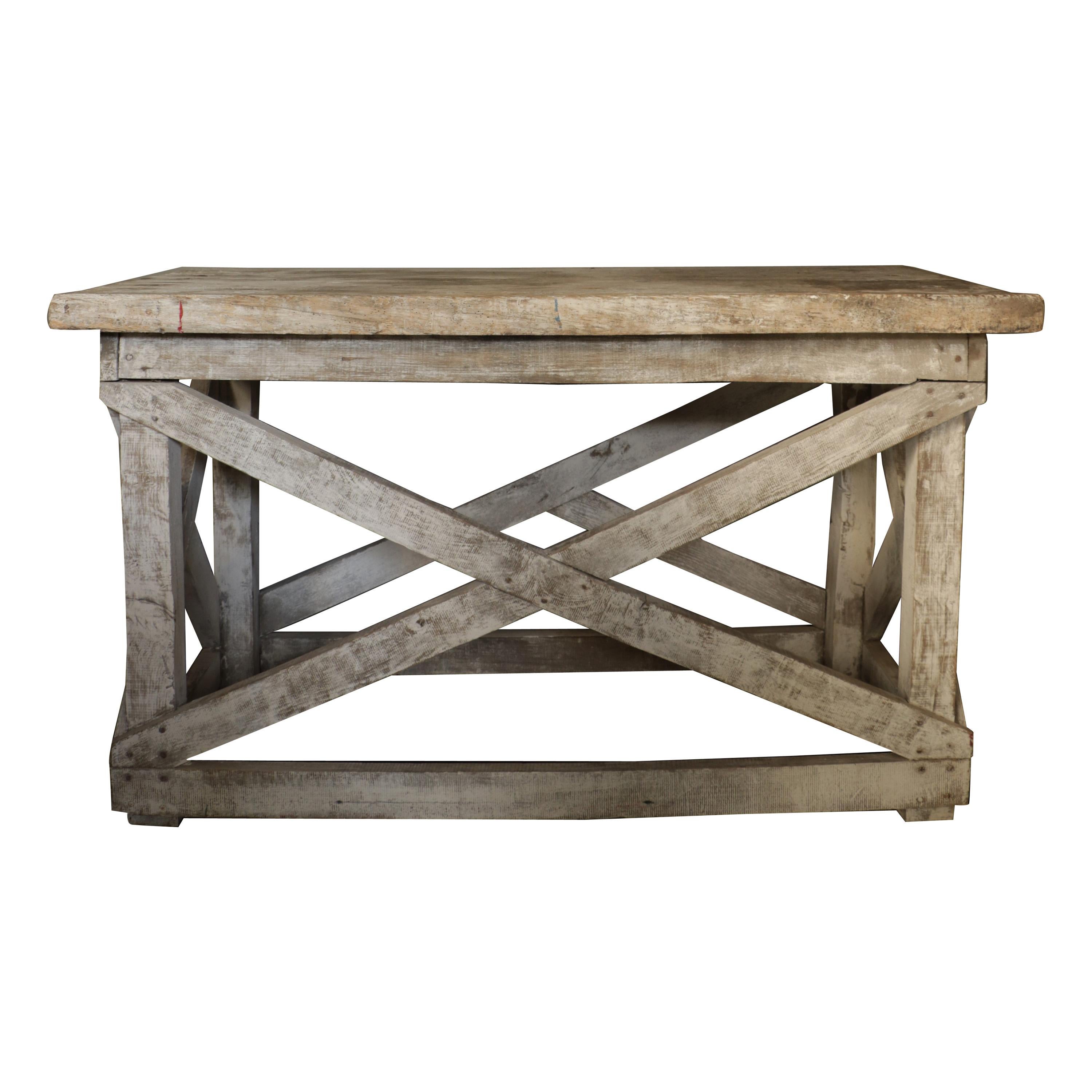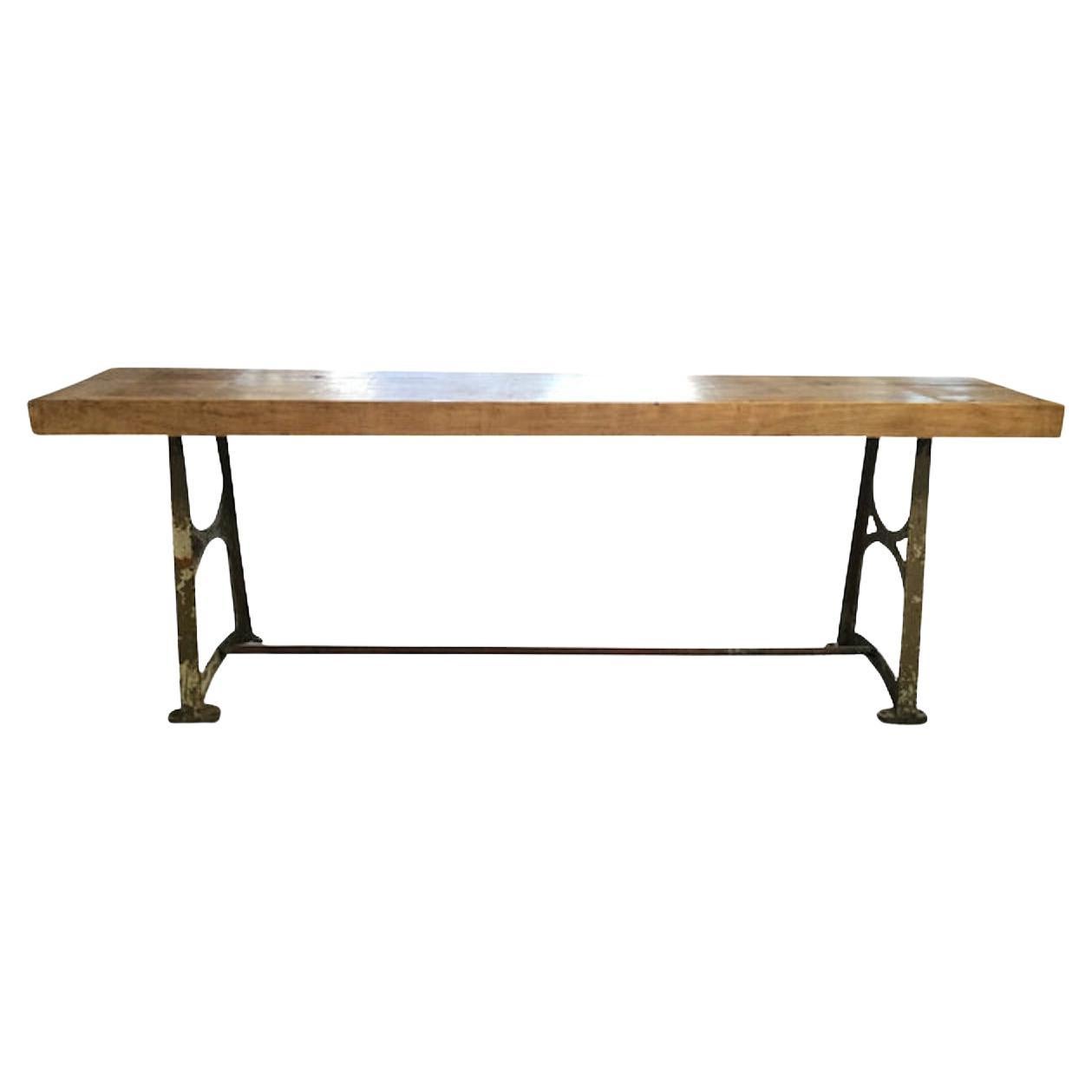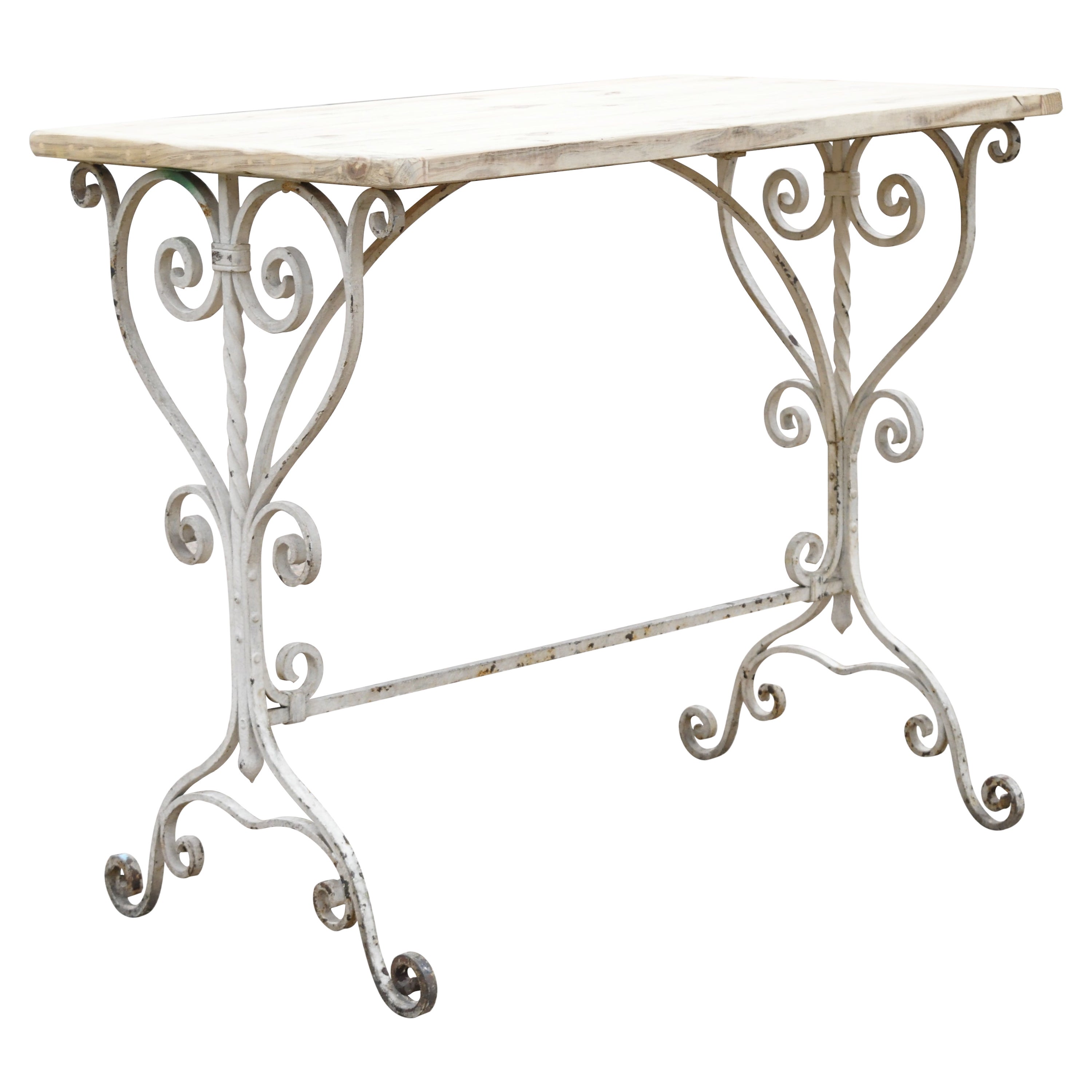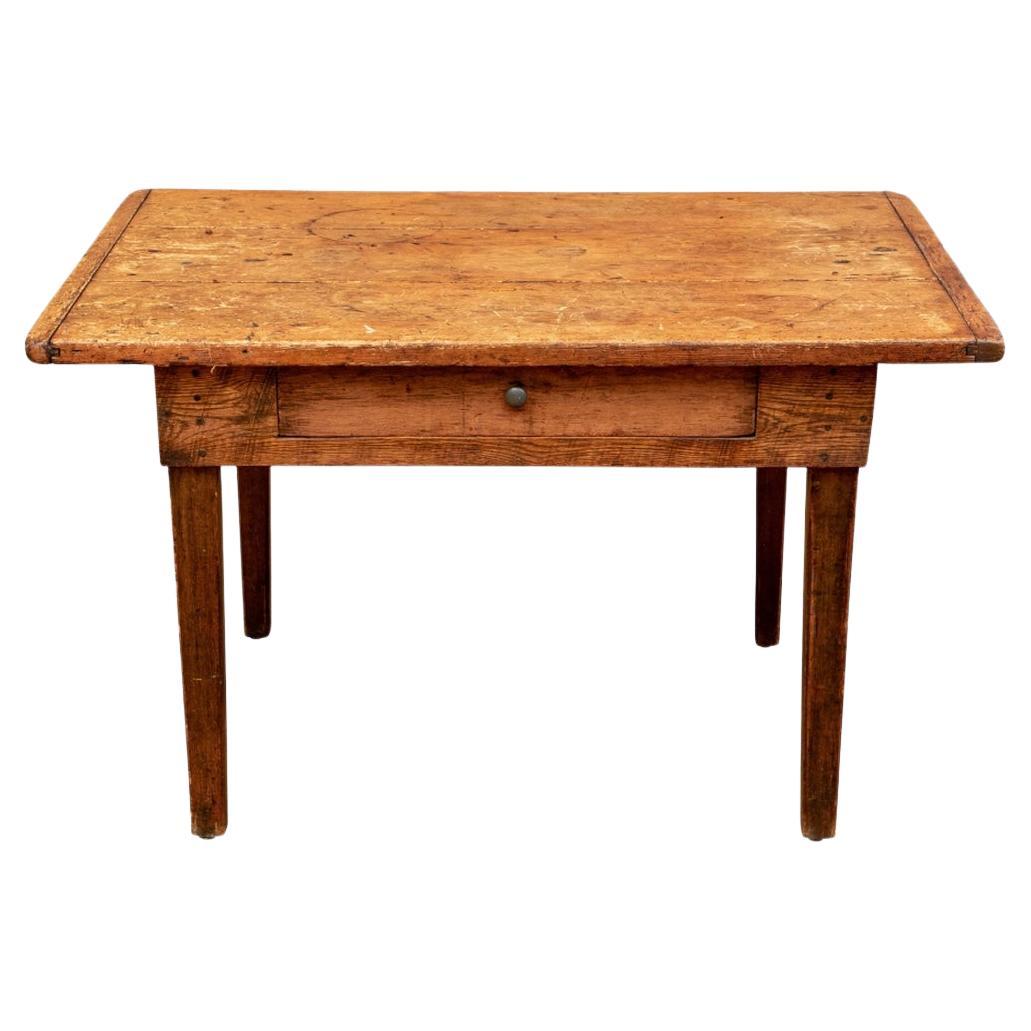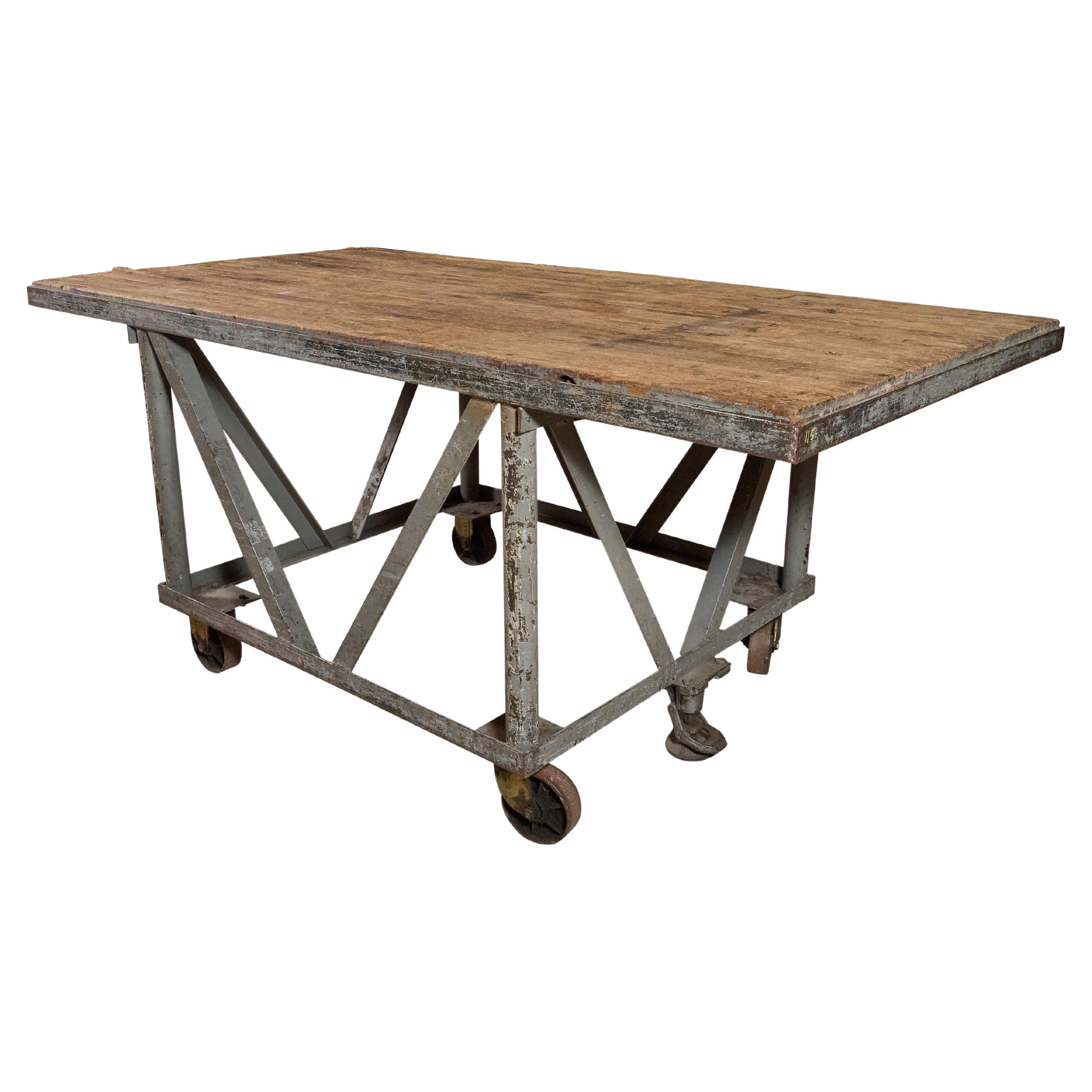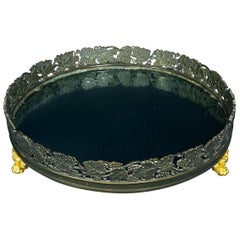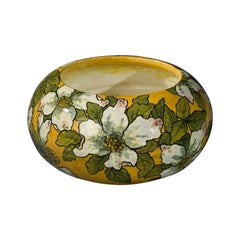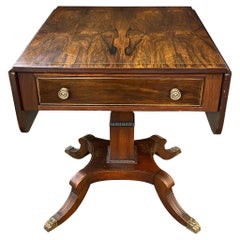
Drop-leaf Work Table with Scrolled Supports
View Similar Items
Want more images or videos?
Request additional images or videos from the seller
1 of 3
Drop-leaf Work Table with Scrolled Supports
About the Item
- Dimensions:Height: 30 in (76.2 cm)Width: 22.5 in (57.15 cm)Depth: 19 in (48.26 cm)
- Materials and Techniques:
- Place of Origin:
- Period:
- Date of Manufacture:about 1830-35
- Condition:See contact dealer.
- Seller Location:New York, NY
- Reference Number:Seller: FAPG 18068D1stDibs: U110921903233
About the Seller
No Reviews Yet
Recognized Seller
These prestigious sellers are industry leaders and represent the highest echelon for item quality and design.
Established in 1952
1stDibs seller since 2010
Associations
Art Dealers Association of America
More From This SellerView All
- Center Table with Scroll Legs, Paw Feet and Marble TopsBy Thomas SeymourLocated in New York, NYCenter Table, about 1818–20 Attributed to Thomas Seymour (1771–1848), working either for James Barker or for Isaac Vose & Son, with Thomas Wightman (1759...Category
Antique 1810s American American Classical Center Tables
MaterialsMahogany, Wood
- Plateau in the Restauration Taste with Grape and Leaf MotifsLocated in New York, NYFrench. Plateau in the Restauration taste with grape and leaf motifs, circa 1825. Ormolu and patinated bronze, with mirror plate and wood backing. Measures: 15 7/8 in. diameter, 3 11...Category
Antique 1820s French Neoclassical Platters and Serveware
MaterialsBronze
- Bowl with Dogwood BlossomsBy John BennettLocated in New York, NYBowl with Dogwood Blossoms, 1882 John Bennett (1840–1907) Earthenware, painted and glazed 4 in. high, 7 5/8 in. diameter Signed, dated, and inscribed (...Category
Antique 19th Century American Aesthetic Movement Decorative Bowls
MaterialsEarthenware
$12,500 - Pier Mirror with Églomisé PanelsLocated in New York, NYPier mirror with Reverse Painted, or Eglomisé, Panels, about 1800 New York, New York Eastern white pine, gessoed and gilded, with compo ornament, glass, reverse painted and gilded,...Category
Antique Early 1800s American American Classical Pier Mirrors and Console...
MaterialsGlass, Wood
- Card Table in the Rococo TasteBy Charles A. BaudoineLocated in New York, NYRECORDED: cf. Anna Tobin D’Ambrosio, ed., Masterpieces of American Furniture from the Munson-Williams-Proctor Institute (Syracuse University Press, Utica, New York, 1999), pp. 85, 86, 87 illus. the Munson-Williams-Proctor tables // cf. The Metropolitan Museum of Art, New York, 19th Century America–Furniture and Other Decorative Arts (1970), exhib. cat., [n.p.] no.133 This table is identical to a pair of card tables bearing the stenciled label of Charles A. Baudouine of 335 Broadway, New York, which were acquired by James and Helen Munson Williams of Utica, New York, in May 1852 for their home, Fountain Elms, which is where they remain today as part of the Munson-Williams-Proctor Art Institute collection. The Williams tables were billed as “1 Rosewood Multiform Table” at $160 for the pair, and they were indeed “multiform” in that they could be used separately and folded as a pair of console tables, opened as a pair of card tables, or joined together as a center table. The present table varies essentially in the fact that it does not include the mechanism that would have allowed it to be attached to another to form a center table. Of French descent, Baudouine was born in New York in 1808. He made his debut as a cabinetmaker in the New York directory of 1829/30, where he is listed at 508 Pearl Street. By 1839/40 he relocated to Broadway, where he remained in business at various addresses until about 1854. A sense of the scale of Baudouine’s operation is given by German immigrant cabinetmaker Ernest Hagen...Category
Antique Mid-19th Century North American Rococo Revival Card Tables and T...
MaterialsWood, Rosewood
- Earthenware John Bennett Plaque with Pink and Blue PhloxBy John BennettLocated in New York, NYFAPG 20247D John Bennett (1840-1907), New York Plaque with pink and blue phlox, circa 1881-1882 Earthenware, painted and glazed Measures: 14 7/8 in. diameter, 1 13/16 in. high Signed and inscribed (on the back): J B[monogram] ENNETT / E 24 NY. / MC [or] CM If the Herter Brothers was the most distinguished and successful cabinet making and decorating firm in New York in the 1870s-1880s, the transplanted Englishman John Bennett was probably the most gifted ceramicist working in New York in the Aesthetic period. (Bennett was included in The Metropolitan Museum of Art’s landmark exhibition, In pursuit of beauty: Americans and the Aesthetic Movement, in 1986–87, and Alice Cooney Frelinghuysen’s chapter, “Aesthetic Forms in Ceramics and Glass,” pp. 216–19, significantly informs this essay). Born in England, the son of a potter who worked in the Staffordshire district, Bennett came under the influence of John Sparkes, head of London’s Lambeth School of Art. Soon thereafter, he was hired by Henry Doulton of the eponymous firm to teach artisans there the new art of underglaze faience decoration, which was part of a revival of the sixteenth-century interest in hand-painted ceramics. A number of Bennett’s works for Doulton were shown in the Doulton display at the Centennial Exposition in Philadelphia in 1876, and the considerable success enjoyed by Bennett and Doulton from an American audience undoubtedly played an important role in Bennett’s decision to leave Doulton and England and set up shop in New York in 1877. By the next year, he had already established a studio in New York, where he produced his own pottery in the tradition of the Arts & Crafts innovators, William Morris and William De Morgan, and also taught classes at the new Society of Decorative Art to the growing band of women who had taken up china painting, both professionally and avocationally. Bennett’s pottery developed a very serious following among students and collectors, and was offered for sale at such leading retail establishments as Tiffany & Company in New York. Typically, his work was brilliantly colored, with carefully drawn naturalistic flowers against a monochromatic background. Bennett’s fully developed American work, particularly pieces of larger scale, is exceedingly rare, as he worked in New York only from 1877 to 1883, in which year he withdrew to a farm in rural West Orange, New Jersey, where his production continued on a limited basis. He remained listed as a ceramicist there until 1889. While in New York City, Bennett maintained a studio at 412 East 24th Street. The present charger, boldly featuring pink and blue phlox, is signed by Bennett, and is inscribed “E 24 NY,” indicating its manufacture during Bennett’s time in New York. Although it is not dated, this piece is closely related stylistically to various dated pieces from 1881–82, which would place its production toward the end of Bennett’s New York years. Although we do not know whether Bennett worked out of this 24th Street studio from the outset, he was indeed working there by 1879 when he made (and signed, inscribed, and dated) a charger with white and red flowers now in the collection of the Art Institute of Chicago, which specifically points to “412 East 24 / NY” (acc. no. 1998.317). Additionally, the U.S. Census of 1880 lists Bennett as a ceramicist located at that same address, married to Mary Bennett with whom he had had six children. There are several other examples from Bennett’s time in New York City, which also give his studio address on East 24th Street, including a covered jar in cadmium yellow with indigo and green flowers made in 1881; an undated footed vase with lilac...Category
Antique 1880s American Aesthetic Movement Ceramics
MaterialsEarthenware
You May Also Like
- Industrial Drop Leaf Table, Work Table or Console TableLocated in Antwerp, BEGreat looking industrial drop leaf table. This wooden table has 2 drop leafs and storage space under on both sides: on 1 side 2 drawers and a door, on the other side a door. Th...Category
Mid-20th Century European Industrial Drop-leaf and Pembroke Tables
MaterialsWood
- American Mahogany Drop Leaf Barley Twist Work Table with Orig. Brasses, C. 1815Located in Hollywood, SCAmerican Federal Mahogany drop leaf three drawer work table with incised carvings, original circular foliage brasses, key hole escutcheons, and resting on bulbous ringed barley twist...Category
Antique 1810s American Federal Industrial and Work Tables
MaterialsBrass
- English Regency Rosewood One Drawer Drop Leaf Work Table with Brass InlayLocated in Milford, NHA fine English Regency rosewood one-drawer drop leaf work table with rectangular top and brass inlaid border, bullseye brass pulls, and shaped leaf supports on each side, supported b...Category
Antique 19th Century English Regency Drop-leaf and Pembroke Tables
MaterialsBrass
- Wicker Work Table with Lift TopLocated in Los Angeles, CAThis most unusual wicker work table with a oak lift top in fine condition. Not sure if it was a work or counter table in a sewing store. Bar Harbor style but unsigned. With a natural...Category
Vintage 1930s American Industrial and Work Tables
MaterialsWicker
$775 Sale Price59% Off - Work TableLocated in Paris, FranceThis work table was most probably a sculptor's table, which explains its particular height of 82 cm. It is made of patinated oak wood and its legs are characterized by cross-shaped ...Category
20th Century European Other Industrial and Work Tables
MaterialsWood
$1,099 - Antique French Art Nouveau Scroll Wrought Iron Wood Top Drafting Work TableLocated in Philadelphia, PAAntique French Art Nouveau scrolling wrought iron wood top 42" drafting work table. Item features a base circa early 1900s, top appears to be a more recent addition/re-purpose, scrol...Category
Early 20th Century Art Nouveau Industrial and Work Tables
MaterialsWrought Iron

